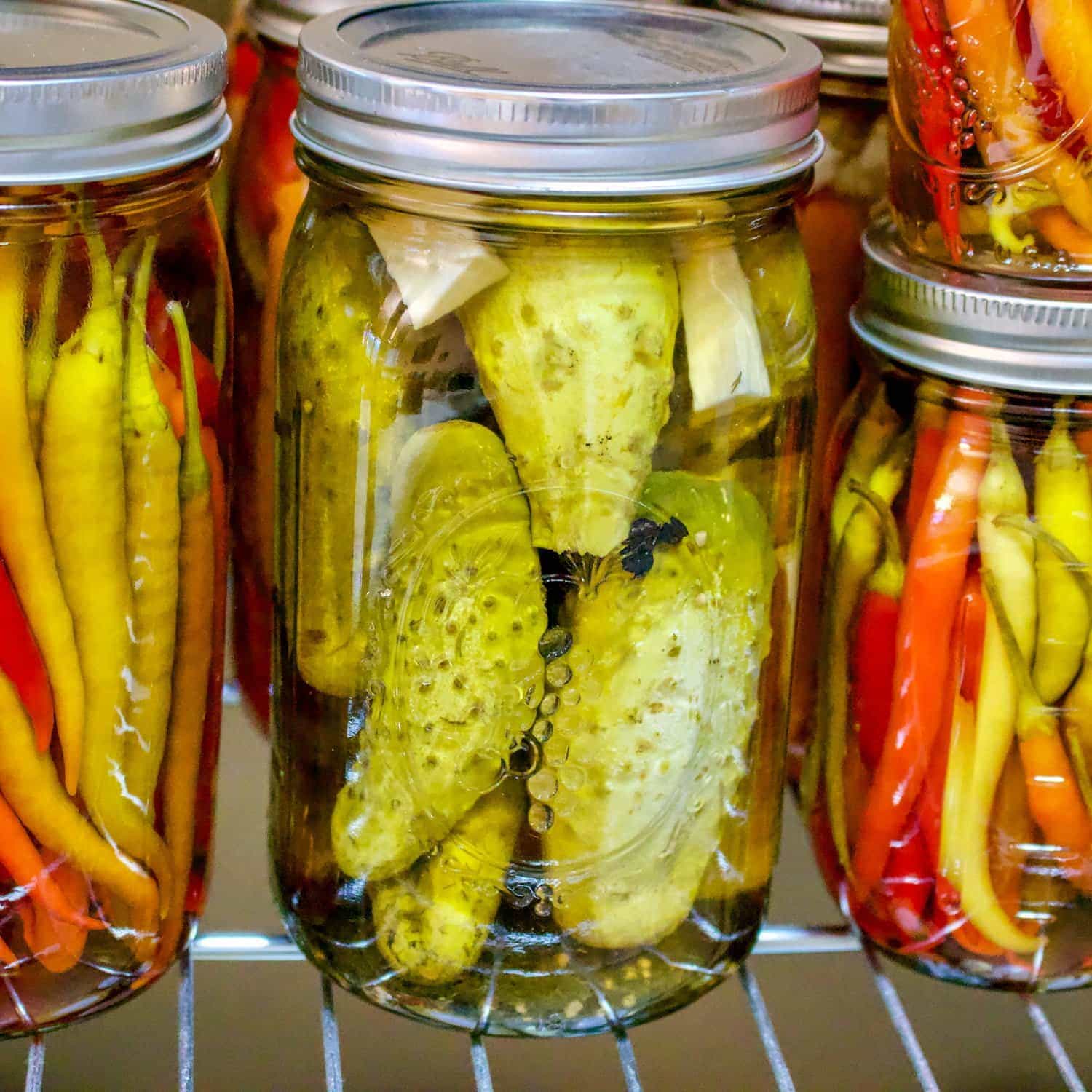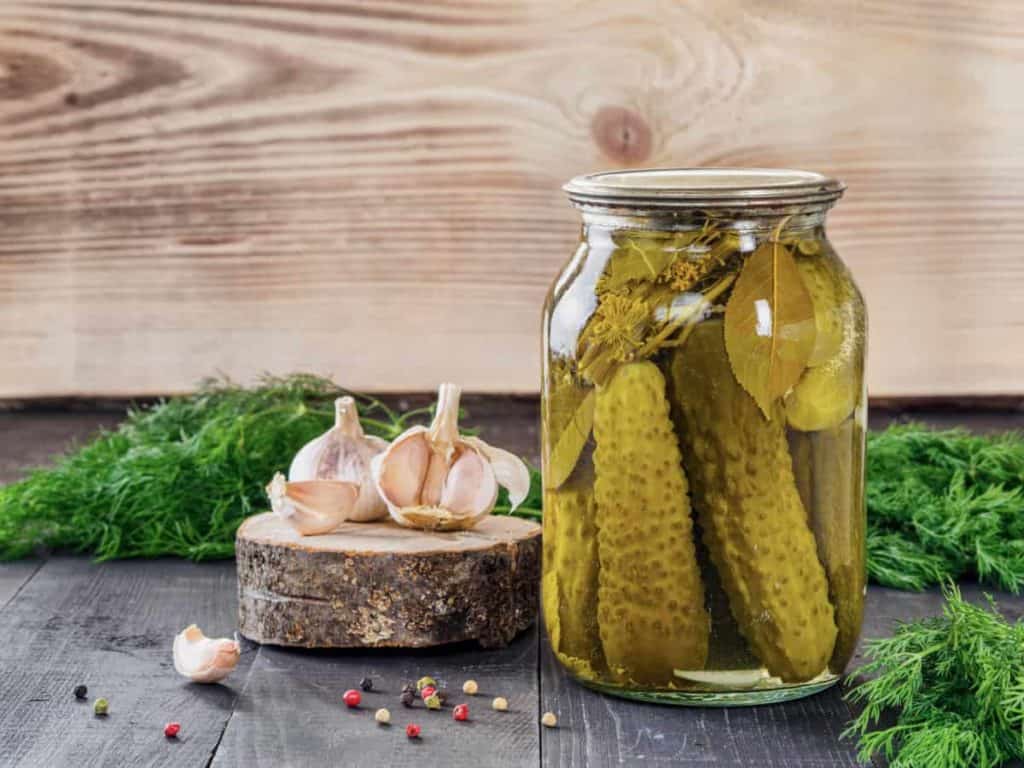Embark on a culinary adventure with our comprehensive guide to crafting the perfect pickling vinegar. Whether you’re a seasoned pro or a novice in the kitchen, this recipe will unlock a world of flavors and elevate your pickling endeavors.
We’ll delve into the secrets of a classic pickling vinegar base, explore tantalizing variations, and uncover the versatility of this culinary staple. Join us as we unravel the art of pickling and create mouthwatering creations that will impress your taste buds.
Pickling Vinegar Base Recipe

Pickling vinegar is a versatile and flavorful liquid used to preserve and enhance the taste of various fruits, vegetables, and meats. Making your own pickling vinegar is a simple and rewarding process that allows you to customize the flavor and acidity to your preference.
Ingredients
- 1 cup white vinegar (5%)
- 1 cup water
- 1 tablespoon salt
- 1 teaspoon sugar (optional)
- Optional spices or herbs (such as mustard seeds, peppercorns, bay leaves, or dill)
Instructions
- Combine all ingredients in a saucepan.
- Bring to a boil over medium heat, stirring occasionally.
- Reduce heat and simmer for 5 minutes, or until the salt and sugar (if using) are dissolved.
- Remove from heat and let cool completely.
- Pour the vinegar into a clean glass jar or bottle and store in the refrigerator for up to 6 months.
Choosing the Right Vinegar
The type of vinegar you use for pickling is important. White vinegar (5%) is the most common and has a neutral flavor that won’t overpower the taste of your pickles. Other types of vinegar, such as apple cider vinegar or balsamic vinegar, can be used for a more flavorful pickle.
Variations on the Basic Recipe

The basic pickling vinegar recipe can be easily customized to create a variety of flavors. By adding herbs, spices, or fruits, you can create vinegars that are perfect for specific types of pickles or dishes.
The most common variation is to add herbs and spices to the vinegar. This can create a wide range of flavors, from the classic dill pickle vinegar to the more exotic curry pickle vinegar. Some of the most popular herbs and spices to use in pickling vinegar include:
- Dill
- Mustard seeds
- Bay leaves
- Thyme
- Garlic
- Peppercorns
You can also add fruits to pickling vinegar to create a sweeter or more complex flavor. Some of the most popular fruits to use in pickling vinegar include:
- Cucumbers
- Onions
- Beets
- Carrots
- Celery
The possibilities are endless when it comes to creating your own variations on the basic pickling vinegar recipe. Experiment with different herbs, spices, and fruits to find the perfect flavor for your pickles.
Using Pickling Vinegar
Pickling vinegar is a versatile ingredient that can be used in a variety of ways. It is most commonly used for preserving vegetables, but it can also be used to make sauces, marinades, and dressings. Pickling vinegar adds a tangy, acidic flavor to foods, and it can also help to preserve them by preventing the growth of bacteria.
Preserving Vegetables
Pickling vinegar is a great way to preserve vegetables. The vinegar helps to kill bacteria and prevent spoilage, and it also gives the vegetables a delicious tangy flavor. Vegetables that are commonly pickled include cucumbers, peppers, onions, and carrots. Pickled vegetables can be eaten as a snack, used as a condiment, or added to salads and other dishes.
Making Sauces
Pickling vinegar can also be used to make sauces. The vinegar adds a tangy flavor to sauces, and it can also help to thicken them. Pickling vinegar can be used to make a variety of sauces, including salad dressings, marinades, and dipping sauces.
Marinating Meats
Pickling vinegar can also be used to marinate meats. The vinegar helps to tenderize the meat and add flavor. Pickling vinegar can be used to marinate a variety of meats, including chicken, beef, and pork. Marinated meats can be grilled, roasted, or fried.
Tips and Tricks for Using Pickling Vinegar
- When using pickling vinegar, be sure to use a vinegar that is at least 5% acidity. This will ensure that the vinegar is strong enough to preserve the food.
- If you are using pickling vinegar to make a sauce, be sure to dilute it with water. This will help to prevent the sauce from being too sour.
- When marinating meats with pickling vinegar, be sure to marinate them for at least 30 minutes. This will give the vinegar time to tenderize the meat and add flavor.
Troubleshooting Common Issues
Pickling vinegar, like any other culinary preparation, can sometimes encounter issues. Here are some common problems and their solutions:
Vinegar Is Cloudy
- Cause: Vinegar can become cloudy due to impurities or suspended particles.
- Solution: Filter the vinegar through a cheesecloth or coffee filter to remove impurities.
- Prevention: Use clear vinegar and clean equipment to minimize impurities.
Vinegar Is Too Strong
- Cause: Vinegar may become too strong due to excessive evaporation or using a vinegar with a high acidity level.
- Solution: Dilute the vinegar with water until it reaches the desired strength.
- Prevention: Use a vinegar with a lower acidity level or control evaporation by storing the vinegar in a tightly sealed container.
Vinegar Has an Off-Flavor
- Cause: Vinegar can develop an off-flavor due to contamination or improper storage.
- Prevention: Maintain proper hygiene during preparation and store vinegar in a clean, airtight container.
li> Solution: Discard the vinegar and make a fresh batch. Ensure proper sanitation of equipment and storage in a cool, dark place.
Preventing Issues
To prevent these issues from occurring in the future, it is crucial to:
- Use high-quality ingredients.
- Maintain proper sanitation throughout the process.
- Follow the recipe instructions carefully.
- Store the vinegar properly in a cool, dark place.
By addressing these common issues and taking preventive measures, you can ensure the successful preparation and use of pickling vinegar.
Additional Resources
Explore a wealth of information on pickling vinegar through these helpful resources.
These sources offer comprehensive guidance, practical tips, and expert insights to support your pickling endeavors.
Websites
- The Spruce Eats: https://www.thespruceeats.com/pickling-vinegar-591528
A comprehensive guide to pickling vinegar, including its uses, recipes, and troubleshooting tips.
- Serious Eats: https://www.seriouseats.com/homemade-pickling-vinegar-recipe
An in-depth article on making your own pickling vinegar, with step-by-step instructions and expert advice.
- Ball Canning: https://www.ballcanning.com/blog/pickling-vinegar-basics/
A resource from a trusted canning brand, providing essential information on pickling vinegar, safety guidelines, and recipes.
Books
- “The Joy of Pickling” by Linda Ziedrich:
A comprehensive cookbook and guide to pickling, with over 200 recipes and detailed instructions.
- “Pickled: A Visual Guide to Making and Eating Fermented Foods” by Andrea Chesman:
A visually stunning guide to fermentation, including a section on pickling vinegar and its uses.
Videos
- “How to Make Pickling Vinegar” by The Kitchn: https://www.youtube.com/watch?v=I8-F6Gp1p3U
A clear and concise video tutorial on making your own pickling vinegar.
- “Pickling 101: The Ultimate Guide” by Brad Leone: https://www.youtube.com/watch?v=5r2CLhH8s3c
An entertaining and informative video guide to all things pickling, including a segment on pickling vinegar.
Closing Summary
With this newfound knowledge, you’re now equipped to master the art of pickling vinegar. Experiment with different variations, explore its culinary uses, and savor the delectable flavors it brings to your creations. Remember, the key to success lies in understanding the basics and embracing the endless possibilities that await.
Answers to Common Questions
What is the ideal ratio of vinegar to water for pickling?
For a balanced flavor, a ratio of 1:1 vinegar to water is recommended.
Can I substitute other types of vinegar for pickling?
Yes, you can use white vinegar, apple cider vinegar, or rice vinegar, depending on the desired flavor profile.
How do I prevent my pickles from becoming rubbery?
Ensure that the cucumbers are fresh and crisp before pickling. Additionally, using a calcium chloride solution can help maintain their texture.
What are some creative uses for pickling vinegar?
Beyond pickling vegetables, you can use pickling vinegar in marinades, salad dressings, sauces, and even cocktails.
How can I store my pickling vinegar for extended periods?
Store the vinegar in a cool, dark place in a tightly sealed container. It can last for up to a year under proper storage conditions.
